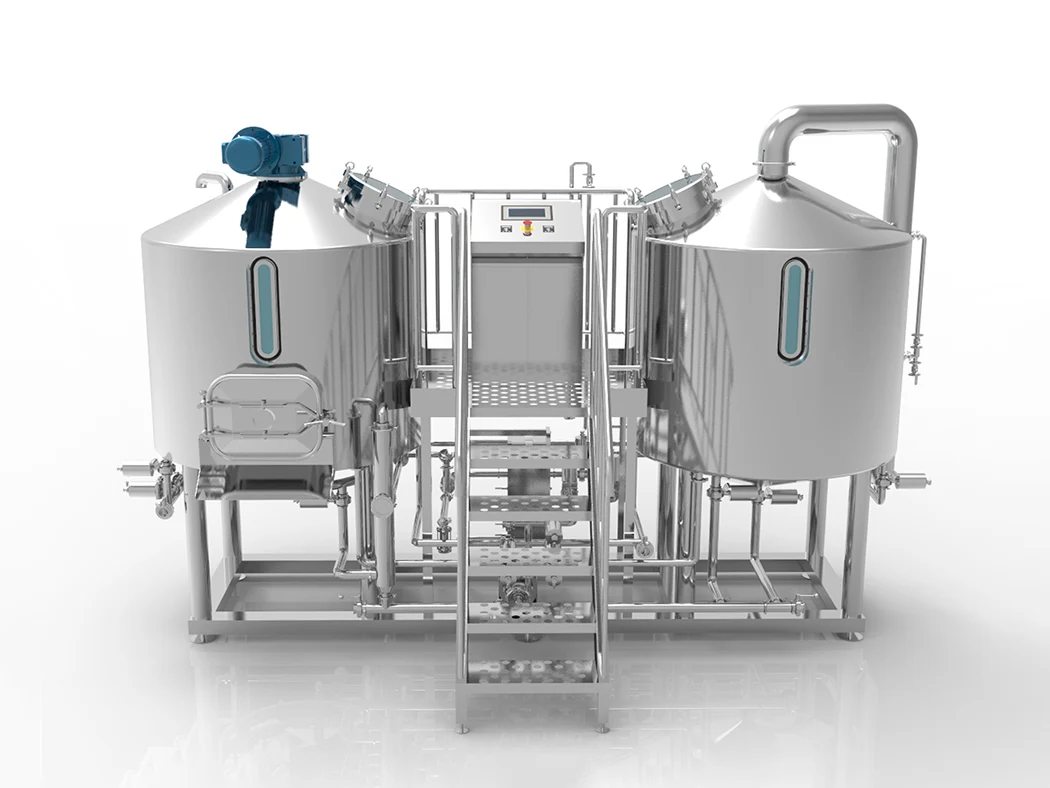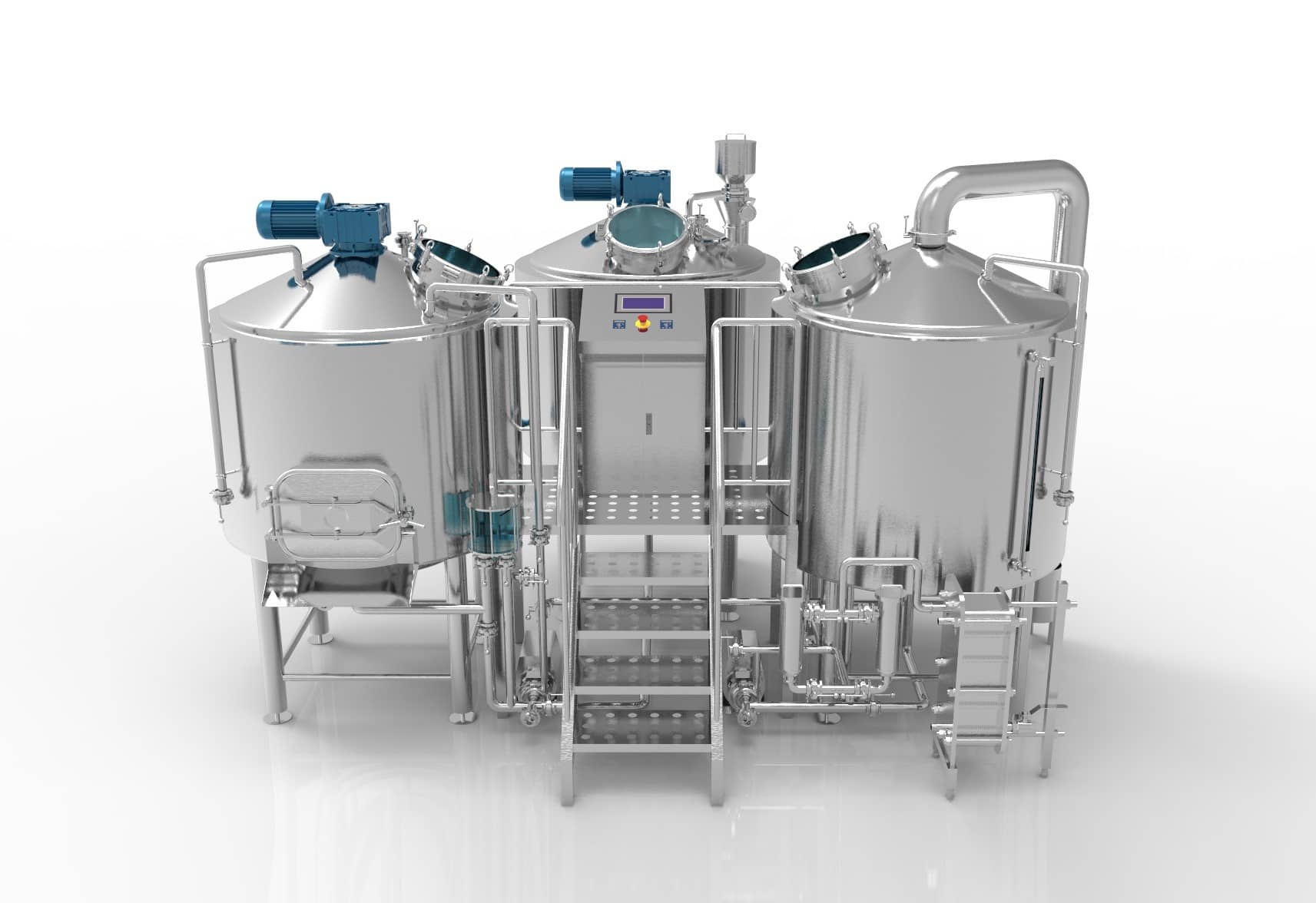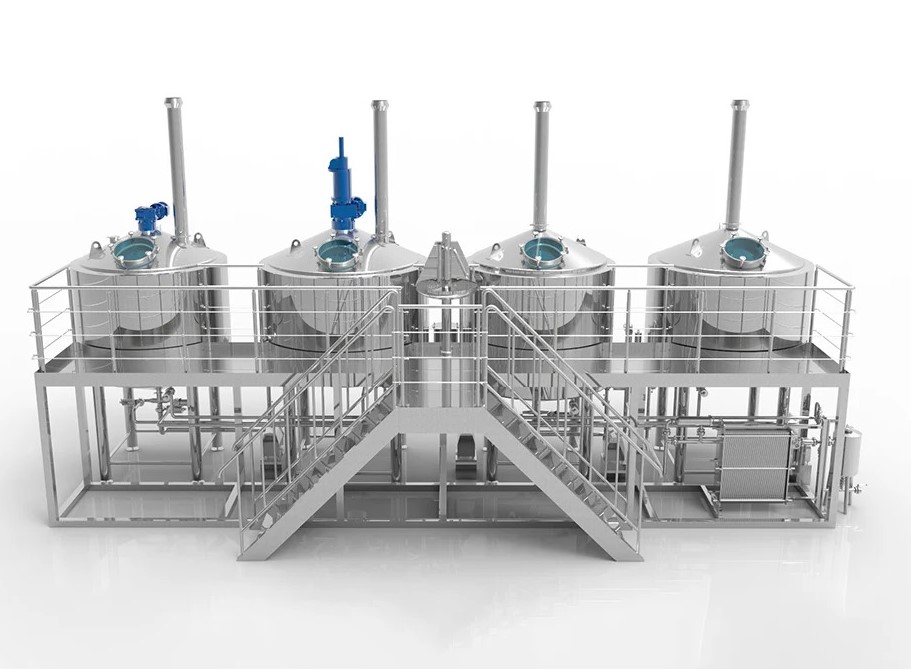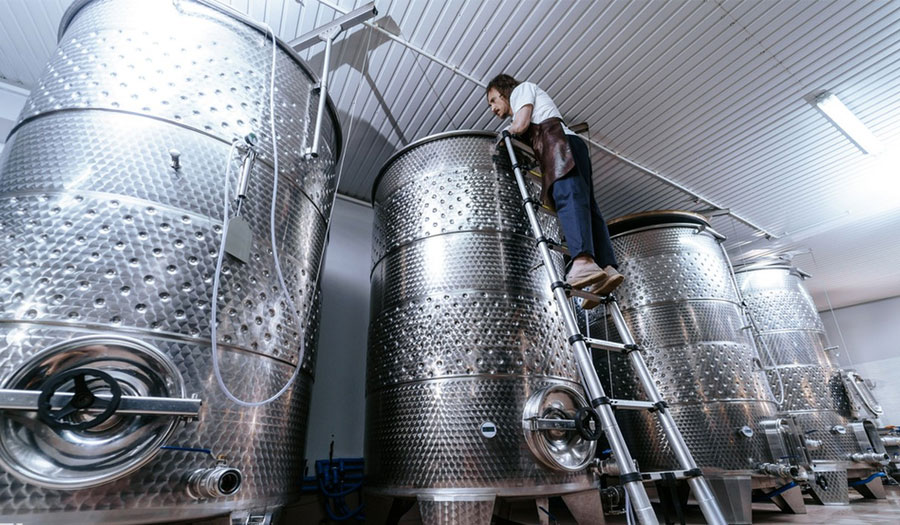The role of red wine tanks: Why are red wine tanks so important?
Red wine tanks play multiple roles throughout the winemaking and storage process. Different types of wine tanks can affect the chemical reactions, oxidation process, and final flavor of the wine.
- Fermentation container: In the red winemaking process, the wine tank is the main place for grape juice fermentation, affecting temperature control, oxygen contact and yeast activity. Wine tanks of different materials will have different effects on tannins, acidity and body structure in wine.
- Aging and maturation: The oxygen permeability of the wine tank determines the maturation speed and flavor changes of the wine. Certain tanks (such as oak tanks) can give wine unique aromas, such as vanilla, caramel, and toasted flavors.
- Storage and stability: Red wine tanks help prevent external contamination and oxidation, and ensure that the wine is stored under suitable conditions. Proper storage containers can reduce sediment and improve the clarity and stability of wine.
- Temperature control management: Some high-end wine tanks are equipped with temperature control systems to ensure the optimal temperature during fermentation, which helps to preserve the fruity aroma and layering of the wine.
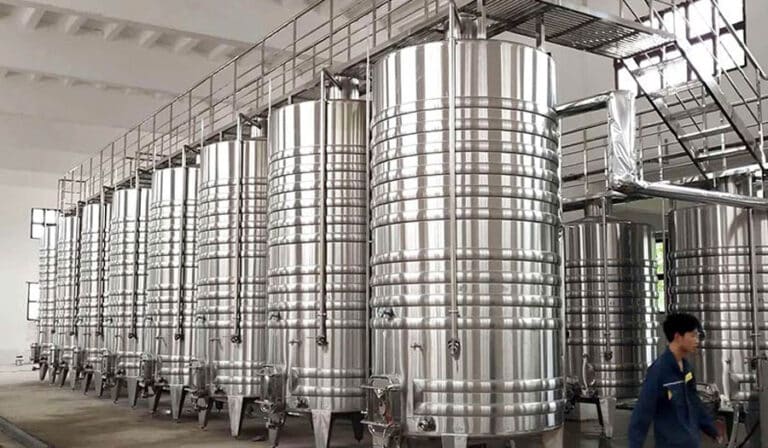
Common types and characteristics of red wine tanks
Stainless steel wine tanks
- Suitable for brewing fresh and fruity wines, such as Chardonnay, Sauvignon Blanc, etc.
- Good sealing can effectively prevent oxidation and pollution.
- Easy to clean, corrosion-resistant, long service life.
- Usually equipped with a temperature control system to facilitate accurate control of fermentation temperature.
Applicable scenarios: large-scale production in modern wineries. Suitable for short-term storage of white wines and some red wines.
Oak wine tanks
- It has a certain oxygen permeability, which allows the wine to oxidize slowly, promotes the softening of tannins, and increases the complexity of the wine.
- Gives wine a unique flavor, such as vanilla, caramel, smoke, etc.
- High maintenance cost, requires regular replacement or renovation.
Applicable scenarios: Suitable for high-end wine aging, such as Cabernet Sauvignon, Pinot Noir and Merlot. Suitable for long-term maturation to improve the flavor level of the wine.
Cement wine tanks
- It has micro-permeability, which makes the wine soft but not over-oxidized.
- Good heat preservation, suitable for fermentation and storage at a stable temperature.
- No flavor intervention of oak wine tanks, suitable for wines pursuing pure fruity aroma.
Applicable scenarios: Suitable for traditional winemaking processes, such as some wineries in France and Italy. Suitable for wines in the middle maturity period, such as Grenache, Syrah, etc.
Ceramic wine tanks
- Combines the advantages of cement tanks and oak tanks, slightly breathable but does not impart wood flavor.
- Suitable for natural wine brewing, can maintain the original flavor of wine.
- High price, fragile, high transportation and maintenance costs.
Applicable scenarios: Suitable for high-end boutique wineries, and winemakers who pursue unique styles. Suitable for small-scale production, especially traditional or organic winemaking projects.
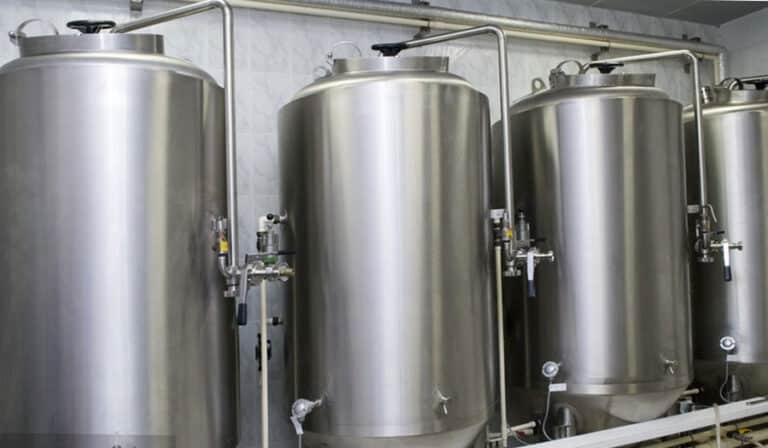
How to choose the right wine tank?
Choose according to the type of wine
- Fresh wine (such as Sauvignon Blanc, or Chardonnay): suitable for Weintanks aus rostfreiem Stahl. Stainless steel wine tanks can avoid unnecessary oxidation and help maintain the fresh fruit aroma of the wine.
- Red wine that needs aging and complex flavor (such as Cabernet Sauvignon, Merlot, Pinot Noir, etc.): Oak wine tanks are usually a better choice. Oak wine tanks can give the wine a unique woody flavor and complex aroma, which helps to enhance the structure and aging potential of the wine.
- A wine that needs to balance the flavor and does not want to be over-oxidized (such as Grenache, Syrah, etc.): Cement or ceramic wine tanks are ideal. Cement and ceramic wine tanks can be slightly breathable, which helps stabilize the wine while maintaining the purity of the fruity aroma without bringing too much woody flavor.
Choose according to the material of the wine tank.
The material of the wine tank is a key factor in determining the flavor and aging effect of the wine. Different materials will affect the degree of contact between the wine and oxygen, thereby affecting the maturation speed and flavor of the wine. Common wine tank materials are stainless steel, oak, cement, and ceramic, each of which has its unique advantages and disadvantages.
- Stainless steel wine tanks: Stainless steel has good sealing properties and can effectively avoid oxidation, which is suitable for wines that need to maintain freshness and fruity aroma. It is also highly durable, easy to clean, and has low maintenance costs.
- Oak wine tanks: Oak wine tanks are oxygen permeable and can bring moderate oxidation, making the tannins of the wine softer and the body richer. Oak will also infiltrate the aroma and taste of wood into the wine, adding complexity. Suitable for long-term aging of wine.
- Cement wine tanks: Cement wine tanks are slightly permeable and suitable for brewing wines that do not require wood flavor. It can slowly oxidize the wine, help balance the structure of the wine, and make the wine more rounded.
- Ceramic wine tanks: Ceramic wine tanks have good air permeability, which helps the micro-oxidation of the wine, but will not excessively affect the fruity aroma of the wine. Suitable for natural brewing or organic wines, usually used for small-scale production.
Selection based on budget and cost
The price of wine tanks varies greatly, and the cost of wine tanks of different materials and types will vary. Therefore, the budget must also be considered when choosing wine tanks.
- Stainless steel wine tanks: Relatively speaking, the initial investment of stainless steel wine tanks is higher, but the maintenance and cleaning costs are low, suitable for long-term use, and are the first choice for efficient wineries.
- Oak wine tanks: Oak wine tanks are expensive and need to be replaced regularly, which increases maintenance costs. Suitable for wineries that pursue high-quality wines and personalized flavors.
- Cement wine tanks: Cement wine tanks are moderately priced and have low maintenance costs. They have a long service life and are very suitable for stable production needs.
- Ceramic wine tanks: Ceramic wine tanks are expensive and fragile, so they are not suitable for large-scale production and are more suitable for small-batch boutique production.
Choose according to temperature control needs.
Temperature control is very important during the fermentation and aging of wine. Different wine tanks have different temperature control capabilities. Choosing the right wine tank can better manage the fermentation temperature and storage temperature.
- Stainless steel wine tanks: Many stainless steel wine tanks are equipped with temperature control systems, which can more accurately control the temperature during the fermentation process to avoid excessive temperature causing too fast fermentation or bad taste.
- Cement and ceramic wine tanks: These two types of wine tanks have good insulation effects and can maintain a relatively stable temperature during fermentation and storage. They are suitable for use in areas with large temperature changes.
- Oak wine tanks: Although oak wine tanks do not have a temperature control system, their natural breathability can provide a relatively stable environment for the wine, helping the wine to slowly oxidize and mature.
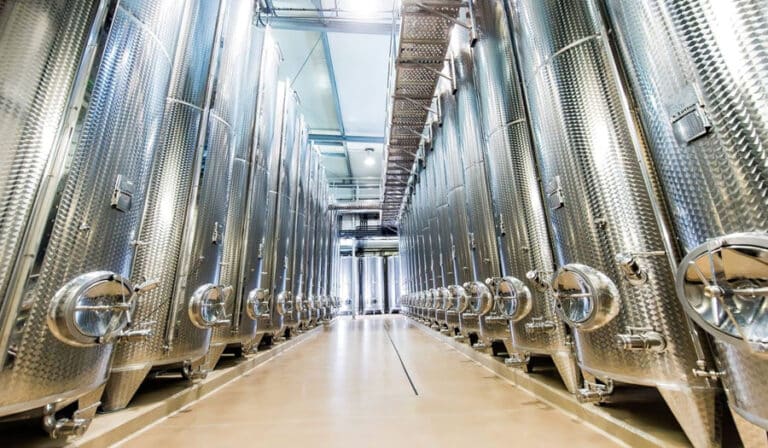
How to maintain and clean stainless steel wine tanks?
- Regular cleaning:After each winemaking process, a thorough cleaning should be carried out. For winemaking equipment, regular cleaning can prevent problems such as wine residue, fermentation sedimentation, and bacterial growth, thereby maintaining the hygiene of the wine tank and the quality of the wine.
- Disinfection:After each cleaning, disinfection can effectively prevent the growth of microorganisms such as bacteria, yeast, and mold. Especially in large-scale winemaking, the disinfection of wine tanks is very important to ensure the quality of the wine.
- Prevent scratches and corrosion.:Although stainless steel has a certain degree of corrosion resistance, if it is not used properly, scratches and corrosion may occur, affecting the durability of the wine tank and the quality of the wine.
- Regular inspection and maintenance:Regular inspection and maintenance are the keys to ensuring the long-term and stable operation of stainless steel wine tanks. In addition to regular cleaning and disinfection, the sealing and internal condition of the wine tank should also be checked.
- Storage and use precautions:Although stainless steel wine tanks are durable, they need to be properly stored and used to ensure their best performance and longest life. Store the wine tanks in a dry, well-ventilated place to avoid humid environments that cause mold growth or metal corrosion. Stainless steel wine tanks should be kept away from extreme temperature differences. Too high or too low temperatures will cause certain damage to the tanks.
Schlussfolgerung
The selection of red wine tanks is a crucial part of the brewing process. Different materials and types of wine tanks will directly affect the flavor, quality, and aging potential of the wine. Only by choosing the right wine tank according to the type of wine, brewing scale, budget, and brand positioning can you brew a unique wine. Whether it is a home brewer or a professional winery, the reasonable selection and maintenance of wine tanks are the keys to improving the quality of wine.

